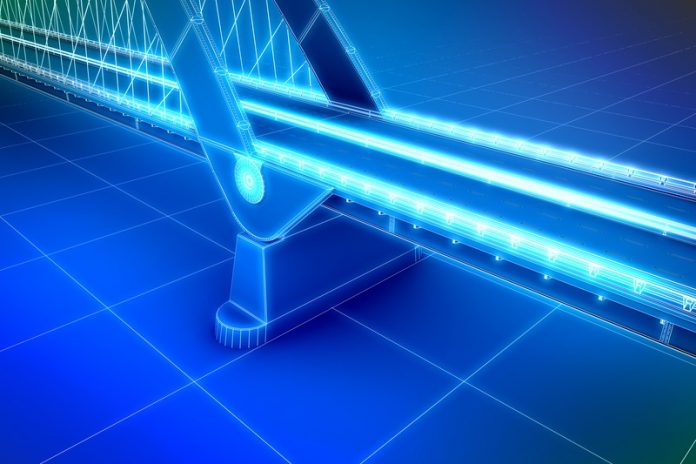Autodesk and the Alan Turing Institute are among the partners in a consortium to observe the behaviour of one of the world’s first digitally printed 3D bridges
Amsterdam-based start-up MX3D is 3D printing a 12-metre long stainless steel pedestrian bridge to be installed across one of Amsterdam’s canals in the old city centre by late 2018.
The new partners joining the MX3D project also includes the Amsterdam Institute for Advanced Metropolitan Solutions (AMS) and the work is being supported by the Lloyd’s Register Foundation, a UK charity which supports the research and development of ideas that can benefit our society by reducing the safety risks of critical infrastructures.
The team from The Alan Turing Institute is responsible for designing and installing a sensor network on the 3D bridge. These sensors will collect structural measurements such as strain, displacement and vibration, and will measure environmental factors such as air quality and temperature, enabling engineers to measure the bridge’s health in real time and monitor how it changes over its lifespan.
The data will also allow the team to “teach” the bridge to understand what is happening on it: how many people are crossing it and how quickly.
MX3D says the data from the sensors will be input into a “digital twin” of the bridge, a living computer model that will reflect the physical bridge.
The performance and behaviour of the physical bridge can be tested against its digital twin, which will provide valuable insights to inform designs for future 3D printed metallic structures. It will also enable the current 3D bridge to be modified to suit any required changes in use, ensuring it is safe for pedestrians under all conditions.
Autodesk is supplying the cloud services that will power the bridge’s data collection and processing. Autodesk is also working with Alan Turing Institute researchers to develop machine learning algorithms that will enable the 3D bridge to interpret and to react intelligently to its environment.
AMS will be implementing new ways to use, visualise and connect the bridge’s data to other sources of environmental data in the Amsterdam Metropolitan Area.
Gijs van der Velden, MX3D co-founder, said: “The MX3D technique offers engineers the freedom of working with metals in an entirely new way. The digital twin of the bridge will help with the creation of a new design language. We hope that this data-centric engineering method will speed up the introduction of this exciting new production technique into the construction market.”














